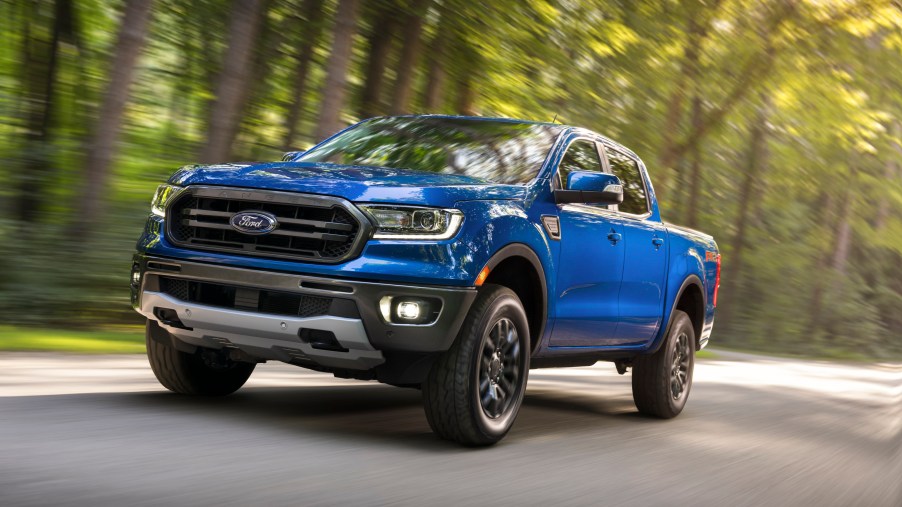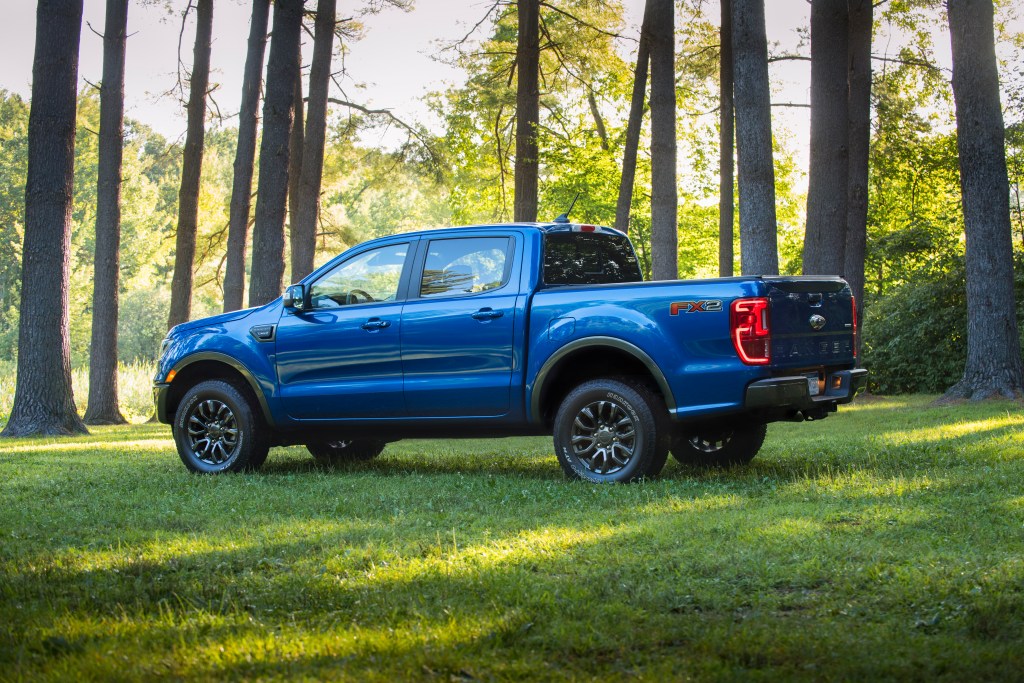
How Safe Is the Ford Ranger?
The Ford Ranger returned redesigned for 2019 and ratings earned in important safety evaluations have been good. It even earned a superior rating for front crash prevention from the Insurance Institute for Highway Safety (IIHS).
Yet while it did well with both the IIHS and the National Highway Traffic Safety Administration, it didn’t do better than Toyota Tacoma.
How it did
The new Ranger is much safer than the 1998 Ranger which the IIHS only evaluated in one test. It’s also obvious that Ford reconfigured its foreign-market truck to be on par with U.S. standards. The size of the former Ranger was nice though.
Last sold in the U.S. as a 2011 model, Ranger was available with either a regular or extended cab. The 2019 Ranger has a crew cab called SuperCrew and an extended cab called SuperCab. The crew cab version was the only one the IIHS tested.
Ranger proved in the tests that it’s truly “Ford Tough” in an accident. While no mid-size pickup truck has come along and passed all the IIHS tests with flying colors, it performed well.
Strengths
In five of the six IIHS tests, it earned a Good rating. Ranger earned the Good ratings in the driver-side small overlap front, head restraint, moderate overlap front, roof strength, and side tests.
The front crash prevention system that comes standard on the Ford pickup earned a superior rating in the tests conducted by IIHS. The forward collision notifications in the system also met the criteria as established by the NHTSA. In addition to that, the system helped Ranger avoided a collision in the 12 mpg test. The system dropped the vehicle’s speed at an average of 24 mph in the agency’s 25 mph test.
The NTHSA gave the 2019 Ford Ranger an overall four out of five stars. Ford Ranger received five out of five stars in the side crash component which gives a single rating for combined side barrier and side pole star ratings.
Weaknesses
In the IIHS tests, the passenger on the small front overlap test earned Ranger a lesser Acceptable rating. In that test, a quarter of the vehicle’s front end collides at 40 mph with an unyielding barrier. The results of that test showed that the test dummy was at “significant risk of injury” to the right lower leg of an actual person due to some form of cabin intrusion.
On the driver’s side, the results were better. Other pickups in the class like GMC Canyon and Chevrolet Colorado also showed the risk of front passenger injury, earning a lower Moderate rating.
A Marginal rating was given for headlight effectiveness and ease of child seat installation using LATCH anchors.
When it came to the NHTSA frontal crash tests, the front passenger side didn’t perform as well as the driver’s side. While Ranger did very well on the side crash tests, the NHTSA only gave it three out of five stars for its rollover star rating, citing a 25.6% rollover risk. It also cited four recalls on the truck.
Safety features

The 2019 Ranger comes with a slew of great safety features. Aside from the pre-collision system with forward collision warning, it has a rearview camera and automatic emergency braking.
With Ford’s MyKey system, you can configure any of your Ford keys to control the truck’s safety features even when you’re not in it. The system is helpful with teen drivers or anyone else who uses the truck that you want to help foster better driving habits. The system can set limits on the audio system’s volume, set the vehicle’s maximum speed, and offers seatbelt alerts.
Other driver-assist and advanced safety features are available as options. You can choose features like adaptive cruise control, automatic high beams, blind-spot monitoring, driver attention monitoring, front and rear parking sensors, lane departure alerts, lane-keep assist, and rear cross-traffic alerts.


